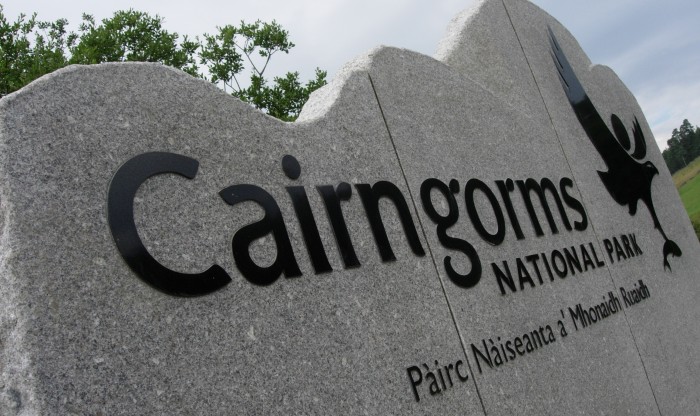Like many people, I suspect, I have been waiting for months for another case of raptor persecution to occur in the Cairngorms National Park. For under the current grouse moor management regimes that dominate much of the National Park, its not a case of “if” but “when” another raptor will disappear. While its taken longer than I expected, last week the RSPB announced a young hen harrier, which had been satellite tagged on the National Trust for Scotland’s Mar Lodge Estate, had disappeared just north of Ballater. As Raptor Persecution Scotland reported (see here) its almost certain this was on either the Invercauld estate, held by a Trust on behalf of the Farquharson family or Dinnet estate, owned by former Cairngorms National Park Authority Board Member Marcus Humphrey. Their article documents known cases of raptor persecution in the area.
The Cairngorms National Park Authority issued this news release in response to the incident:
Statement: Hen harrier disappearance
From Grant Moir CEO, Cairngorms National Park Authority
“A hen harrier has once again disappeared in the Cairngorms National Park, with a satellite tracker ceasing to transmit. The Park Authority is determined to stop these recurring disappearances.
“Earlier this week the CNPA met with Police Scotland to discuss how increased use of special constables can help to tackle wildlife crime in the Cairngorms National Park. We also continue to work on other solutions to these issues.
“The CNPA look forward to the establishment by Scottish Government of the independently-led group to look at the environmental impact of grouse moor management and will feed in to that review.”
(see here for link)
While its good to hear their Chief Executive state that the CNPA is determined to stop raptors disappearing, I don’t think the measures they have currently taken will achieve this. The two main initiatives the CNPA has taken to protect raptors are the Civtech challenge to improve performance of satellite tags
(see here) and the initiative to recruit special constables
(see here) which was announced in the new National Park Partnership Plan and is referred to in the press release. While its good to hear that last week the CNPA met with the police about this – they are well ahead of the Scottish Government which has still failed to announce the membership of the so-called independent review of grouse moor management – neither initiative is likely to do much to protect raptors.
The problem is even if satellite tags were made indestructible and were able to record that a raptor had been killed and where – actually they are pretty good at present
(see here) – this would still not prove who did the killing. And the idea that special constables will be able to prevent persecution of raptors by estates is naive in the extreme: keepers are out on estates day in day out and impossible to supervise. The answers to raptor persecution have to lie in controlling land management activities on estates.
Parkswatchscotland has previously suggested that byelaws could be used to create a licensing regime specific for a National Park which would not require legislation by the Scottish Government. In other words the CNPA has the means available to it to take action now. Its Board has never openly discussed this option – it should do.
However, while such a solution might work in a National Park where the Board was determined to tackle landowners, unfortunately the reality at present from the destruction at Cairngorm to the profileration of hill tracks is that the CNPA does not appear to have the will or resources to use its regulatory powers. So, even if the CNPA introduced a licensing regime – and was allowed to act independently of its minders at the Scottish Government – this might not change anything.
Another solution is to nationalise the land. In many National Parks across the world land is in public ownership. National Parks were set up in Scotland on the assumption that it would be possible to persuade landowners to cooperate. They have now had 15 years to do so and some still blatantly ignore all the conservation objectives of the National Park. I think its time therefore for people to start demanding that where there is evidence of repeated raptor persecution (or a repeated failure to meet other conservation objectives) on particular estates in our National Parks the Scottish Government should compulsorily purchase the estate concerned. Tney could then transfer the land to a new National Parks land-management service, as exists in other countries, to manage.


I thought land owners could be prosecuted in Scotland if wildlife was persecuted on their land?
Yes, landowners could in theory be prosecuted under the law of vicarious liability introduced in January 2012. There have been just two prosecutions since then, both in lowland areas. The law is not working and there are a number of reasons for this, including that the landowner has to have a relationship with the person who committed the offence. So, if the procurator fiscal is not in a position to prove who committed the offence, its almost impossible to prosecute the landowner. Moreover in a case earlier this year where a keeper had been found guilty of killing a buzzard on the Newlands estate, the case against the landowner was dropped (see here). Prosecution is clearly not working which is why I have been suggesting that other measures are needed in our National Parks.